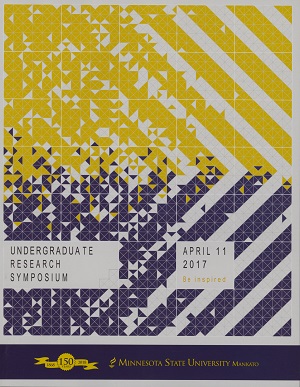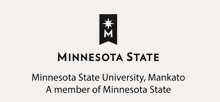Ethnography of the Dead: How Gravemarkers Can Be Used to Reconstruct the Identity of the Past
Location
CSU 202
Start Date
11-4-2017 10:00 AM
End Date
11-4-2017 11:00 AM
Student's Major
Anthropology
Student's College
Social and Behavioral Sciences
Mentor's Name
Kathleen Blue
Mentor's Department
Anthropology
Mentor's College
Social and Behavioral Sciences
Description
When someone dies in modern America, after their body is mourned, buried and time passes, oftentimes only two things linger to preserve who they were in life: their skeleton and their gravemarker.
Gravemarkers provide a noninvasive glimpse into the identity of an individual: their name, birth and death, kinship connections, religion, military service, economic status and more can be observed carved into stone and laid above their burial. Collections of gravemarkers form cemeteries, and when observed as a whole the identity of a population can be reconstructed.
To understand more about the population of Mankato and how it has changed over the past century, I decided to analyze Mount Olivet, a medium-sized cemetery located within the city that was first used to bury the dead at the turn of the twentieth century and is still actively used today. From October to November 2016, I photographed every gravemarker in the cemetery, which resulted in over two thousand photographs. I used the photographs I took to pull as much information as I could from each individual with a gravemarker at Mount Olivet to create a spreadsheet. Using the spreadsheet, I was able to look at population trends and specific individual circumstances to create an ethnography of Mankato's dead. I decided to focus on four specific features on gravemarkers at Mount Olivet: text, symbols and artwork, life expectancy, and military service. Each of these features were used to reconstruct the identity of both individuals and the greater Mankato population.
Ethnography of the Dead: How Gravemarkers Can Be Used to Reconstruct the Identity of the Past
CSU 202
When someone dies in modern America, after their body is mourned, buried and time passes, oftentimes only two things linger to preserve who they were in life: their skeleton and their gravemarker.
Gravemarkers provide a noninvasive glimpse into the identity of an individual: their name, birth and death, kinship connections, religion, military service, economic status and more can be observed carved into stone and laid above their burial. Collections of gravemarkers form cemeteries, and when observed as a whole the identity of a population can be reconstructed.
To understand more about the population of Mankato and how it has changed over the past century, I decided to analyze Mount Olivet, a medium-sized cemetery located within the city that was first used to bury the dead at the turn of the twentieth century and is still actively used today. From October to November 2016, I photographed every gravemarker in the cemetery, which resulted in over two thousand photographs. I used the photographs I took to pull as much information as I could from each individual with a gravemarker at Mount Olivet to create a spreadsheet. Using the spreadsheet, I was able to look at population trends and specific individual circumstances to create an ethnography of Mankato's dead. I decided to focus on four specific features on gravemarkers at Mount Olivet: text, symbols and artwork, life expectancy, and military service. Each of these features were used to reconstruct the identity of both individuals and the greater Mankato population.
Recommended Citation
Walker, Trisha. "Ethnography of the Dead: How Gravemarkers Can Be Used to Reconstruct the Identity of the Past." Undergraduate Research Symposium, Mankato, MN, April 11, 2017.
https://cornerstone.lib.mnsu.edu/urs/2017/oral-session-02/3



